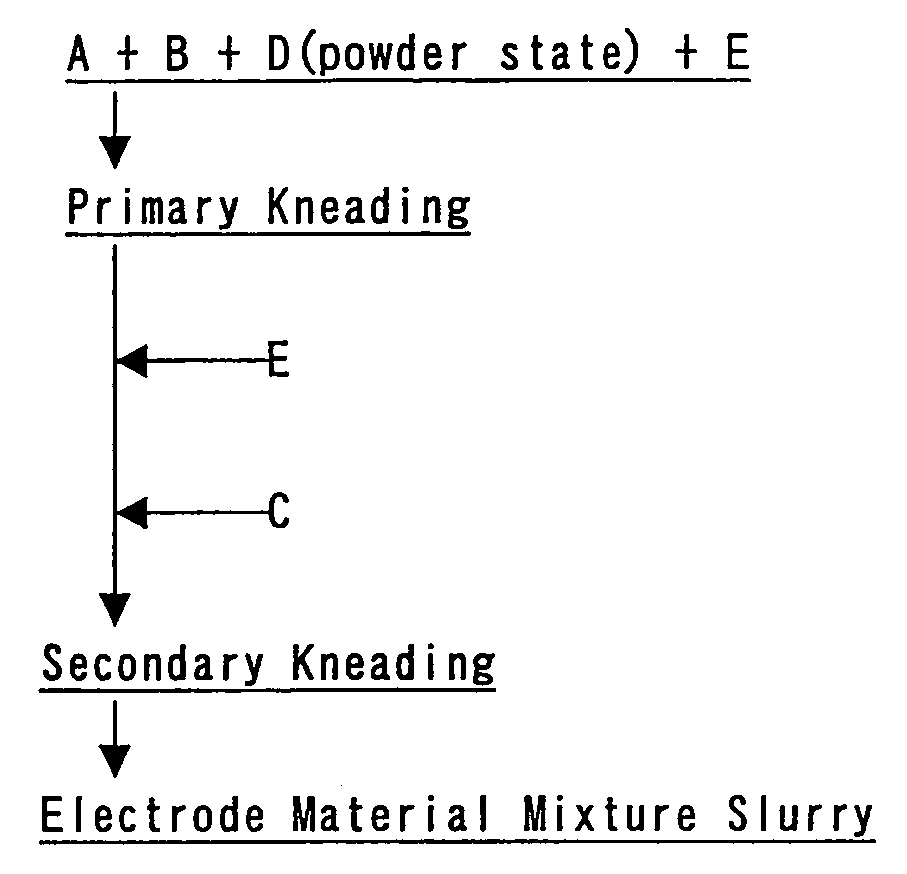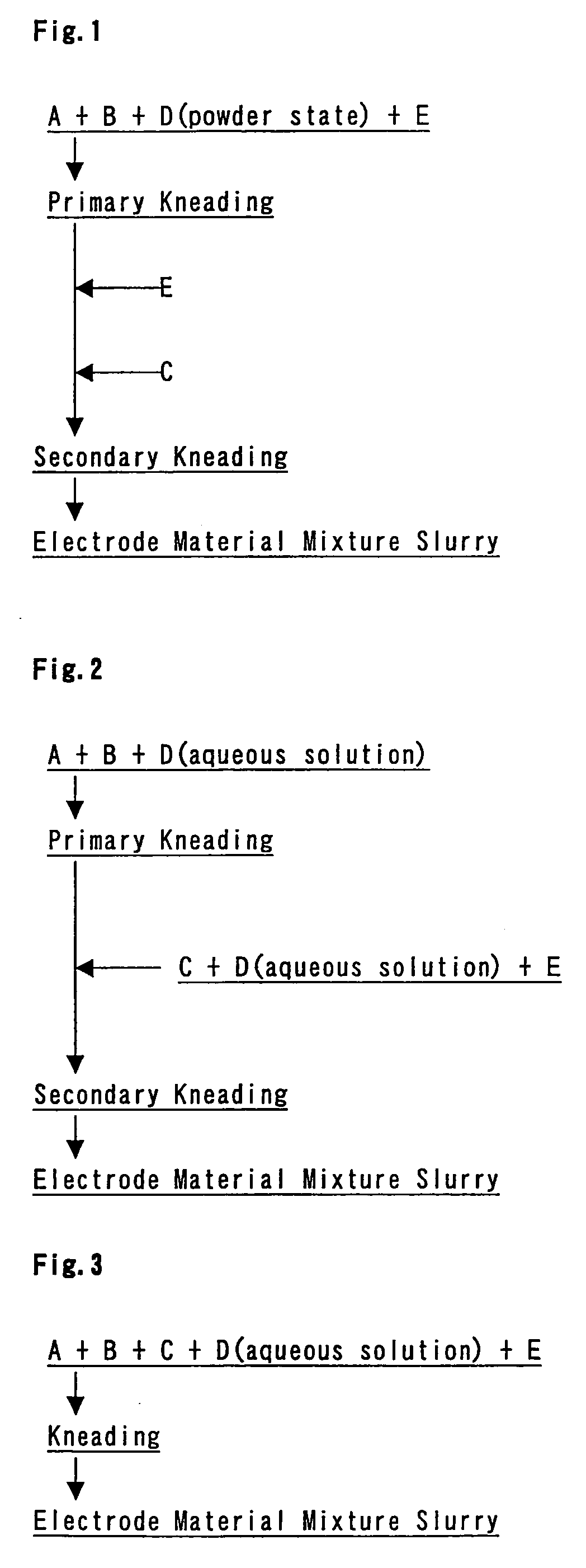Electrode plate of positive electrode for non-aqueous electrolyte secondary battery and manufacturing method thereof
- Summary
- Abstract
- Description
- Claims
- Application Information
AI Technical Summary
Benefits of technology
Problems solved by technology
Method used
Image
Examples
example 1
[0149] An electrode plate for a positive electrode was prepared according to the flow chart illustrated in FIG. 1.
(i) Preparation of Electrode Plate for Positive Electrode
[0150] A lithium cobaltate having a specific surface area of 1.4 m2 / g measured by BET method was used as an active material. The lithium cobaltate was obtained by calcining a mixture of lithium carbonate and cobalt tetroxide for 4.5 hours at 750° C., and then calcining the mixture for 7.5 hours at 900° C., crushing the sintered mixture, and then sieving.
[0151] A primary kneaded matter with the solid content of 80 wt % was obtained by mixing 100 parts by weight of the active material, 4 parts by weight of acetylene black (AB) as a conductive material, and 0.4 parts by weight of carboxymethyl cellulose (CMC) in a powder state, and adding a predetermined amount of water to the mixture, and then kneading the mixture with a double arm kneader.
[0152]“CELLOGEN 4H” of DAI-ICHI KOGYO SEIYAKU CO., LTD. was used as the C...
example 2
[0200] An electrode plate of a positive electrode was made in the same manner as in Example 1 except for the following changes.
[0201] In this example, 2 parts by weight of rubber particles comprising copolymer of 2-ethylhexyl acrylate, acrylic acid, and acrylonitrile (2-EHA-AA-AN) per 100 parts by weight of the active material was used instead of using 2.4 parts by weight of PTFE-HFP per 100 parts by weight of the active material as a binder in the secondary kneading. A dispersion of 2-EHA-AA-AN stably dispersed in water in a form of fine particles was used. The 2-EHA-AA-AN content in the water dispersion was 40 wt %.
(Evaluation 3)
[0202] The electrode plate thus obtained and the electrode plate of Example 1 were evaluated comparatively with a method shown below. The results are shown in Table 3.
[Separation of Positive Electrode Material Mixture]
[0203] A positive electrode with a certain width was cut out from the electrode plate, and the positive electrode, a negative electrod...
example 3
[0208] An electrode plate of a positive electrode was made in the same manner as in Example 2 except for the following changes.
[0209] In this example, 0.1 parts by weight, 0.2 parts by weight, 0.8 parts by weight, 1.1 parts by weight, and 1.4 parts by weight of 2-EHA-AA-AN per 100 parts by weight of the active material were used instead of using 2 parts by weight of 2-EHA-AA-AN per 100 parts by weight of the active material as a binder in the secondary kneading, to obtain electrode plates 1, 2, 3, 4, and 5, respectively. Then, lithium ion secondary batteries 1,2,3,4, and 5 were made by using the electrode plates 1, 2, 3, 4, and 5, respectively in the same manner as in Example 1.
(Evaluation 4)
[0210] The electrode plates 1 to 5 thus obtained were evaluated for [Separation of Positive Electrode Material Mixture] in the same manner as in (Evaluation 3). Also, battery capacities of the batteries 1 to 5 thus obtained and battery capacities of Example 2 were comparatively evaluated by ...
PUM
 Login to View More
Login to View More Abstract
Description
Claims
Application Information
 Login to View More
Login to View More - R&D
- Intellectual Property
- Life Sciences
- Materials
- Tech Scout
- Unparalleled Data Quality
- Higher Quality Content
- 60% Fewer Hallucinations
Browse by: Latest US Patents, China's latest patents, Technical Efficacy Thesaurus, Application Domain, Technology Topic, Popular Technical Reports.
© 2025 PatSnap. All rights reserved.Legal|Privacy policy|Modern Slavery Act Transparency Statement|Sitemap|About US| Contact US: help@patsnap.com


